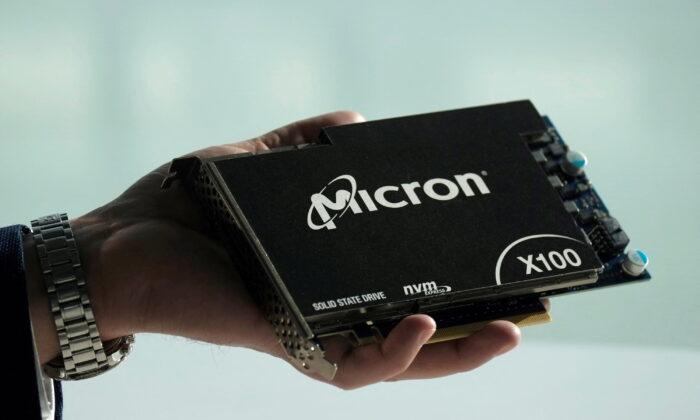Micron will build a new $100 billion computer chip factory over the next two decades in upstate New York.
The company will build the manufacturing facility at White Pine Commerce Park, in Clay, a suburb of Syracuse, N.Y. in Onondaga County.
The new chip factory was made possible by the recently passed CHIPS and Science Act of 2022, which was co-sponsored by Schumer and allocates $52 billion in grants to encourage and expand domestic semiconductor production.
President Joe Biden signed it into law over the summer.
“Micron, an American company, is investing $20 billion dollars this decade and up to $100 billion over twenty years in CHIPS manufacturing in upstate New York, creating tens of thousands of good paying jobs.”
“Together, we are building an economy from the bottom up and the middle out, where we lower costs for our families and make it right here in America,” he concluded.
The CHIPS act was passed in response to America’s overreliance on imports of foreign-made semiconductors, after the supply chain crisis heavily impacted imports of the chips during the pandemic.
Bringing Chip Production Back to America
Micron’s CEO Sanjay Mehrotra credited the passage of the law for making the investment possible, he told the NYT.“There is no doubt that without the CHIPS Act, we would not be here today,” said Mehrotra.
“The combined efforts at the federal, state, and local level paved the way for Micron to realize the largest private investment ever made in New York state history. We are thrilled to make this significant investment in New York, making the Empire State the location of the biggest leading-edge memory site in the U.S.,” he said.
The CEO said that federal legislation, favorable tax treatment, and local agreements with state governments, were needed to match the subsidies offered by Asian nations to “bring chip-making back to America.”
The CHIPS Act spurred a wave of investments by semiconductor companies, including Micron, which also broke ground for a $15 billion factory in Boise, Idaho last month.

Perks Being Senate Majority Leader
The decision to put the factory in New York is a win for Schumer, a key sponsor of the bill, who advocated for more tech investments in his home state to host the new facilities.Schumer, in an interview with CNBC, called the investment “transformative for upstate New York but also for America, because we’re going to regain the lead in manufacturing probably the most important commodity or product for the 21st century.”
He said he “had upstate New York in mind” three years ago when designing the first iteration of what became the CHIPS and Science Act when he said this sort of project “was a dream of mine.”
The Senate Majority Leader said that access to plenty of water, power, and space in upstate N.Y., along with his power as the majority leader of the U.S. Senate, made it an attractive spot to invest over competing states attracting high-tech investments, like Texas and Ohio.

“We’d like to become the chip fab center of manufacturing in the country,” Schumer boasted, adding that “the world can’t run without chips.”
Schumer said that if it was not for his CHIPS act, semiconductor manufacturers would have taken or kept their plants overseas.
Upstate N.Y. was once a center of the electronics industry, but decades of decline, high taxes, corporate downsizing, and unfavorable regulations, saw manufacturing leave the state.
Gambling to Revive Manufacturing In Upstate NY
New York’s Gov. Kathy Hochul was another prime advocate on the state’s behalf to encourage more high-tech investment, according to the NYT.Both Schumer and Hochul met and frequently spoke with Mehrotra over the past year.
The state’s package has performance-based incentives valued at $5.5 billion and is tied to the chip maker’s commitment to create the promised 9,000 new jobs and to follow through on its $100 billion investment.
Hochul’s office released an economic impact study by Regional Economic Models, which found the project will create an average of nearly 50,000 jobs in New York state per year over the next 31 years.
The study estimated it would generate an additional $16.7 billion in real, inflation-adjusted, economic output for New York State.
“This is our generation’s Erie Canal moment, and my administration is committed to meeting this pivotal and exciting moment in time,” said Onondaga County’s McMahon in a statement.
“We will make sure that every neighborhood in every corner of the County feels part of this historic and transformational project. As important, this is a project that many people felt we weren’t worthy of, but at the end of the day the greatest memory technology company in the world chose Onondaga County.”
Shares of Micron rose 4.3 percent at the end of trading on Oct. 4.





